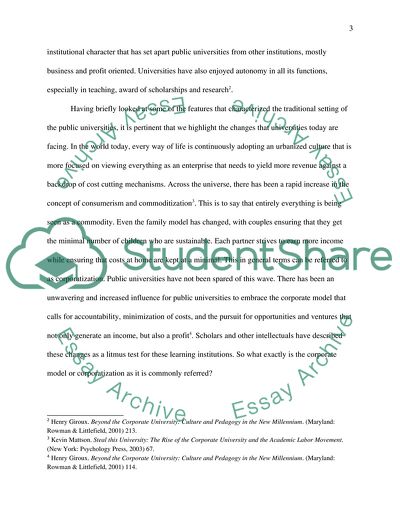Cite this document
(The Corporate University Model Essay Example | Topics and Well Written Essays - 1750 words, n.d.)
The Corporate University Model Essay Example | Topics and Well Written Essays - 1750 words. https://studentshare.org/education/1872414-the-corporate-university-model-has-an-adverse-effect-on-teaching-and-scholarship-in-the-arts-and-social-scienxes
The Corporate University Model Essay Example | Topics and Well Written Essays - 1750 words. https://studentshare.org/education/1872414-the-corporate-university-model-has-an-adverse-effect-on-teaching-and-scholarship-in-the-arts-and-social-scienxes
(The Corporate University Model Essay Example | Topics and Well Written Essays - 1750 Words)
The Corporate University Model Essay Example | Topics and Well Written Essays - 1750 Words. https://studentshare.org/education/1872414-the-corporate-university-model-has-an-adverse-effect-on-teaching-and-scholarship-in-the-arts-and-social-scienxes.
The Corporate University Model Essay Example | Topics and Well Written Essays - 1750 Words. https://studentshare.org/education/1872414-the-corporate-university-model-has-an-adverse-effect-on-teaching-and-scholarship-in-the-arts-and-social-scienxes.
“The Corporate University Model Essay Example | Topics and Well Written Essays - 1750 Words”. https://studentshare.org/education/1872414-the-corporate-university-model-has-an-adverse-effect-on-teaching-and-scholarship-in-the-arts-and-social-scienxes.


